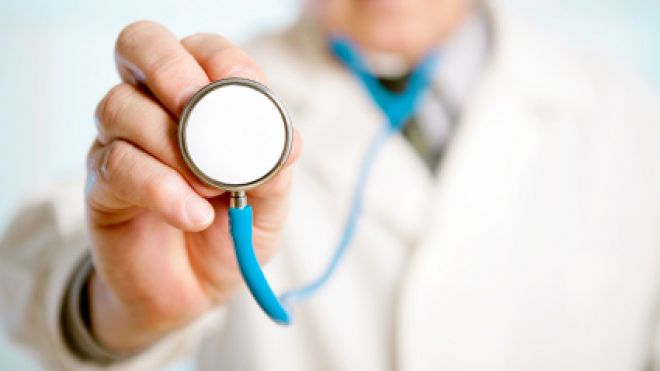Tag Archives: medical-daily
Vietnam War veterans with PTSD have higher risk of heart disease
source : http://www.foxnews.com/health/2013/06/27/vietnam-war-veterans-with-ptsd-have-higher-risk-heart-disease/
New nerve regeneration technique restores bladder function in paralyzed mice
source : http://www.foxnews.com/health/2013/06/26/new-nerve-regeneration-technique-restores-bladder-function-in-paralyzed-mice/
AMA votes to end ban on gay men donating blood
source : http://www.foxnews.com/health/2013/06/21/ama-votes-to-end-ban-on-gay-men-donating-blood/
Number of new primary care physicians in US ‘abysmally low’
Fewer doctors in the United States are choosing to become primary care physicians – especially in rural areas of the country, Medical Daily reported. In fact, the rate at which U.S. medical schools are producing primary care physicians is “abysmally low,” said Dr. Candice Chen, from the George Washington University School of Public Health and Human Services. Chen and her fellow researchers studied a group of nearly 9,000 doctors who graduated from more than 750 different residency sites between 2006 and 2008. Less than a quarter of these doctors chose to become primary care physicians after their residencies, and less than one in 20 chose to work in rural areas of the country, according to Medical Daily. Additionally, 198 of the 759 medical institutions studied failed to graduate a single doctor who went on to practice in a rural area. “If residency programs do not ramp up the training of these physicians, the shortage in primary care – especially in remote areas – will get worse,” Chen told reporters. “The study's findings raise questions about whether federally funded graduate medical education institutions are meeting the nation's need for primary care physicians.” Some experts believe the country's medical education system will need to change to fix the shortage. An editorial published in the New York Times suggested that the U.S. educate future doctors for free to eliminate the large debt most medical students incur. The program would be funded by issuing penalties to any doctor who chose to pursue a specialty outside of primary care. Click for more from Medical Daily.source : http://www.foxnews.com/health/2013/06/17/number-new-primary-care-physicians-in-us-abysmally-low/
Nearly 40 percent of designated drivers drink before driving, study suggests
Partygoers, beware.  Your designated sober driver may not always be alcohol-free. A new study, conducted in a Florida college town, found that two out of five designated drivers drink alcohol before getting behind the wheel, Medical Daily reported.  Of these inebriated drivers, half had a blood alcohol content (BAC) of .05 percent – enough to affect driving ability while still being under the legal limit. Researchers from the University of Florida spent three months observing more than 1,000 bar patrons as they left drinking establishments throughout the college town of Gainesville, Fla.  The team asked people if they had been deemed the designated driver and whether they would volunteer to take a breathalyzer test before leaving. Throughout the course of the study, 165 individuals identified themselves as designated drivers.  Of this group, 35 percent had at least one drink before leaving the bar, and around half of the drinkers had a BAC between .02 and .05 percent.  The other half had a BAC above .05 percent. According to the study’s researchers, social pressure to drink in combination with a legal BAC limit of .08 percent often leads to designated drivers having one or two drinks before hitting the road.  However, the scientists maintained that numerous studies have documented significant alcohol-related impairment at a BAC level of .05 percent. “Considering the low BAC levels at which driving-related abilities are negatively affected, these ï¬�ndings identify the need for consensus across researcher, layperson, and communication campaigns that a (designated driver) must be someone who abstains from drinking entirely,” the researchers wrote. Nearly one-third of all traffic-related deaths in the United Sates involve alcohol-impaired drivers, resulting in nearly 11,000 deaths each year, according to the Centers for Disease Control and Prevention (CDC).  In an attempt to curb these deaths, the National Highway Transportation Safety Board has recommended that the legal BAC limit for driving be reduced from .08 percent to .05 percent. The University of Florida study will be published in the July issue of The Journal of Studies on Alcohol and Drugs.  However, the average age of study participants was 28 and the individuals tested were not ethnically or racially diverse, meaning the results cannot be applied to the general American population. Click for more from Medical Daily.source : http://www.foxnews.com/health/2013/06/10/nearly-40-percent-designated-drivers-drink-before-driving-study-suggests/
Woman claims she contracted herpes from lipstick at a Rihanna concert
A Harlem woman is claiming she contracted herpes from a sample of RiRi Woo lipstick she tested at a Rihanna concert in Brooklyn on May 7, Medical Daily reported. Starkeema Greenidge, 28, has filed a lawsuit in Manhattan Supreme Court against MAC Cosmetics, which manufactures the product.  According to Greenidge, she visited a pop-up shop at the singer’s Barclay’s Center show, where a Mac Cosmetics representative applied the RiRi Woo lipstick to Greenidge’s lips. Caused by the herpes simplex virus, herpes is a common sexually transmitted disease (STD) that affects 16.2 percent of Americans, or one out of every six people, between the ages of 14 and 49, according to the Centers for Disease Control and Prevention.  The disease is often contracted through sex, but it can also be transmitted through touching and kissing while an infected individual has a herpes “flare up.” Greenidge said in the suit that the MAC Cosmetics representative failed to warn her that the lipstick had been used by other concert attendees.  When Greenidge developed a cold sore two days later, she went to the doctor, where she was diagnosed with herpes. According to the lawsuit, Greenidge has suffered mental anguish and distress after contracting the STD, Medical Daily reported. A spokesperson for MAC Cosmetics issued a statement to the Daily Beast on Thursday about the incident: “Consumer safety is a top priority at MAC Cosmetics, and we take these matters very seriously. We are closely reviewing these claims.” Click for more from Medical Daily.source : http://www.foxnews.com/health/2013/05/31/woman-claims-contracted-herpes-from-lipstick-at-rihanna-concert/
Pesticide exposure tied to Parkinson’s disease
Need another good reason to go organic? According to data published in the journal Neurology, exposure to weed killer, solvents and pesticides increases people’s risk for Parkinson’s disease by 33 to 80 percent, Medical Daily reported. Researchers collected data from 104 studies from around the world to analyze how pesticides, insecticides, weed killers, and many other agricultural chemicals influenced an individual’s risk for Parkinson’s disease. Though researchers found links between many chemicals and Parkinson’s, they found no link between Parkinson’s and the chemical dichlorodiphenyltrichloroethane (DDT), which has been banned in the United States for decades, Medical Daily reported. However, people who were exposed to the weed killer paraquat or the fungicides maneb and mancozeb had a two-fold greater risk for contracting the disease. Additionally, researchers showed a direct link between the length of time people were exposed to pesticides and their likelihood of contracting Parkinson’s. The data also indicated that agricultural workers had a 33 percent higher risk of developing Parkinson’s disease than people who didn’t work in agriculture.  The study did not distinguish between people who came in contact with pesticides through their skin or through breathing the chemicals. Parkinson's disease is a neurological condition, characterized by a decrease of the brain’s ability to produce the neurotransmitter dopamine, which ultimately leads to tremors and a decrease in motor control.  Treatment options for Parkinson’s patients are limited. Click for more from Medical Daily.source : http://www.foxnews.com/health/2013/05/28/pesticide-exposure-tied-to-parkinsons-disease/
Woman to have ‘dolphin-assisted’ birth
A pregnant woman and her husband have traveled to Hawaii where they plan on having a “dolphin-assisted birth,” a water delivery among dolphins, according to Medical Daily. Heather Barrington, 27, and her husband Adam, 29, of South Carolina, are preparing for the July arrival of their first child through a series of prenatal and postnatal swims with a pod of dolphins at The Sirius Institute in Pohoa, Hawaii. The Sirius Institute describes itself as a “a research consortium with the purpose of 'dolphinizing' the planet.” They recently set up the Dolphin Attended, Water, Natural and Gentle Birth Center (DAWN), due to what they claim is an increasing demand on their web site for people looking to give birth near dolphins. The Sirius Institute claims that giving birth with dolphins is part of an ancient native Hawaiian practice. While dolphin-assisted births are rare, dolphin assisted therapy (DAT) has been used for more than 25 years in patients with mental and physical disabilities and autism, according to Medical Daily. During DAT, patients swim and play with dolphins living in captivity while completing tasks meant to improve skills like hand-eye coordination. However, scientists claim there is little scientific evidence indicating that DAT is therapeutically effective. Water births – without the presence of dolphins –have proven benefits, including more efficient contractions, improved blood circulation for the mother, less pain and more oxygen for the baby, according to the American Pregnancy Association (APA). However, the APA noted that few studies have been done examining the risks associated with water births.       In the event that a “dolphin-assisted” birth cannot occur, the couple has made plans to deliver with a midwife. Experts point out that dolphins are predators and can become aggressive, though dolphin-related injuries among people are relatively rare, Medical Daily reported. “Having that connection with the pod of dolphins anytime – even if the birth doesn’t happen in the water – still brings peace, comfort and strength to the mother and baby during labor,” Heather told the South Charlotte News. Click for more from Medical Daily.source : http://www.foxnews.com/health/2013/05/28/woman-to-have-dolphin-assisted-birth/






